Visiting Kasama: Renowned City of Japanese Pottery
We took an excursion to Kasama to visit the Edo-period farmhouse, Shunpu Banri-so, home of potter, Kitaoji Rosanjin, and then we toured Fukuda Kiln.
We docked in the port city of Hitachinaka, a company town for the primary employer, Hitachi, and about 75 miles from Tokyo.
We booked the excursion CULTURAL KASAMA, a 4.25-hour Regent-included tour that required an hour-long bus ride to Kasama. The tour focused on the area’s pottery—a perfect option for art lovers! Since one of my primary focuses on this 150-day epic voyage is to delve into the art and artists wherever we travel, this was an ideal choice.
HIGHLIGHTS of the tour:
Visit the Edo-period farmhouse, Shunpu Banri-so, where famed artist and potter Kitaoji Rosanjin lived.
Gain insight into the prodigious talents of Rosanjin while browsing his artwork.
Visit Fukada Kiln and learn about the long history of pottery-making in Kasama, which began in the Edo Period.
See various pieces of pottery that are characteristic of Kasama.
Spring is arriving in northern Japan, and there was standing water in rice paddies for long stretches along the road from Hitachinaka to Kasama. Rice cultivation in northern Japan involves planting seedlings in the paddies in May—see the tiny plants in the water?—and then managing the water and fertilizer levels throughout the growing season, which lasts from May to September.
As our bus passed beneath this gigantic metal frame, our tour guide asked, “What do you think the purpose of this structure is?” We had all sorts of guesses, some reasonable and some outlandish: “Keep snow off the road.” “Avalanche protection.” “Prevent rock slides.” None of our answers were correct. Do you know, or can you guess, the purpose of this protective barrier? Answer in the comments, and I’ll give a nod to the person with the correct answer.
Here is the tour description, as provided by Regent: Delve into the cultural roots of Kasama, a city renowned for its unique pottery and as the former residence of pioneering 20th-century artist Kitaoji Rosanjin. During your tour of his thatched-roof farmhouse, Shunpu Banri-so, you will learn about its Edo-period design and traditional features, such as the samurai-style gate.
The historical property is so impressive that the Kasama Nichido Museum of Art has annexed it. Although acclaimed as a potter, Rosanjin was even more famous as a culinary visionary, calligrapher, and painter, with his artwork displayed inside.
We enjoyed an extensive tour of the exterior and interior of the 250-year-old farmhouse, a magnificent Japanese-style home. This residence is adorned with pottery, paintings, decorative screens, ceramic tilework, and sculptures, and not only looks but also feels like an artist’s abode.
The farmhouse was relocated from its original site to Kasama City in 1965 and serves as an annex of the Kasama Nichido Museum of Art. The museum docents greeted us and guided us through the home, highlighting features such as the tiles in the bathroom designed by the artist, the artist-designed tearoom, and various historically significant paintings and vases.
Rosanjin was to have said,
“No beautiful thing can be created unless you spend your daily life living surrounded by a beautiful space.”
His home, which is preserved today as it was when he died in 1959, illustrates his point.
After we toured the house, we had plenty of time to stroll through the garden. A few cherry trees were still in bloom, and the sunshine made walking around the central pond even more inviting.
Sculptures dotted the gardens.
Wild iris bloomed along the water’s edge, and birdsong filled the air. Our visit to the Japanese farmhouse and garden was truly idyllic. Since we left the port early and arrived at Shunpu Banri-so half an hour ahead of schedule, we could spend extra time here. It was the perfect setting to enjoy without feeling rushed. After our visit, we traveled to the nearby Fukuda Kiln for the next part of our tour.
From the Regent itinerary: While visiting a nearby pottery studio, you will discover the wonders of Kasama ceramics, which date back more than 250 years. Much of the pottery is earth-toned, resulting from granite fragments and high iron content that pleasantly browns the clay once it is fired. The potters created general household pieces but branched out into decorative pottery after World War II, when plastic containers became popular.
The Fukuda family has operated Fukuda Kiln for over two hundred years. The current owner is the sixth generation of his family to create pottery here. He met our tour group, and with translation assistance from our guide, gave us a tour of the kiln room, two museums—one featuring Kasama pottery from previous generations, and the other showcasing pottery from around the world—plus the showroom, where we all had ample opportunity to purchase a little something to take home.
All of Fukuda kiln’s production is handmade, and each piece requires forty days of preparation before it is ready for firing. A wide variety of colors and effects are achieved using a traditional climbing kiln. Only local clay, formed from granite over the past two million years, is used.
The Fukuda kiln can produce all types of pottery, utilizing either the traditional climbing kiln or a modern electric kiln.
There is also one of the largest vases in the world on the premises. Measuring nearly 18 feet tall, it’s impossible to miss. There were several of these vases until the Great Earthquake shattered all but the smallest.
The owners used all the broken shards to create mosaic pathways. Resourceful potters!
Kilns dating back to the 5th century AD have been excavated from nearby mounds, and over 100 kilns in Kasama now represent the regional tradition of pottery-making. Kasama is also home to the Kasama College of Ceramic Art, an educational and research institute dedicated to educating the next generation of talented young potters.
We also passed dozens of pottery galleries lining the streets of Kasama as we drove to the kiln site. We could easily have spent a full day exploring everything Kasama had to offer pottery enthusiasts.
As we were leaving Fukuda, I noticed ceramic tiles on the wall along the driveway. A long row of 12-inch square tiles, each with a different illustration, stretched from the kiln room to the street. “What are these?” I asked in surprise, wondering why they weren’t mentioned during the tour.
“Oh, my father painted those. They tell an old Japanese folk story.” We were on our way to the bus, among the last in the group, so I couldn’t linger as long as I would have liked. Instead, I took a few quick photos, including one of the panoramic view captured in the following image, and was happy to have had that limited opportunity. It would have been easy to completely miss it in our hurry to keep up with the tour.
We really enjoyed this tour and would highly recommend it to folks interested in Japanese pottery, gardens, architecture, or rural life. We rated this excursion a 5/5!
Next port of call: Miyako, Japan.

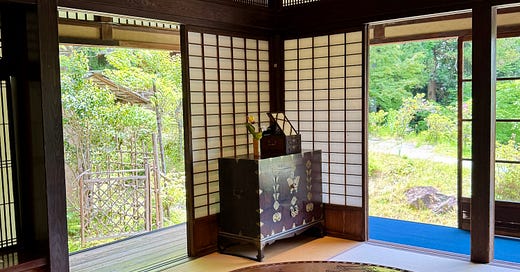



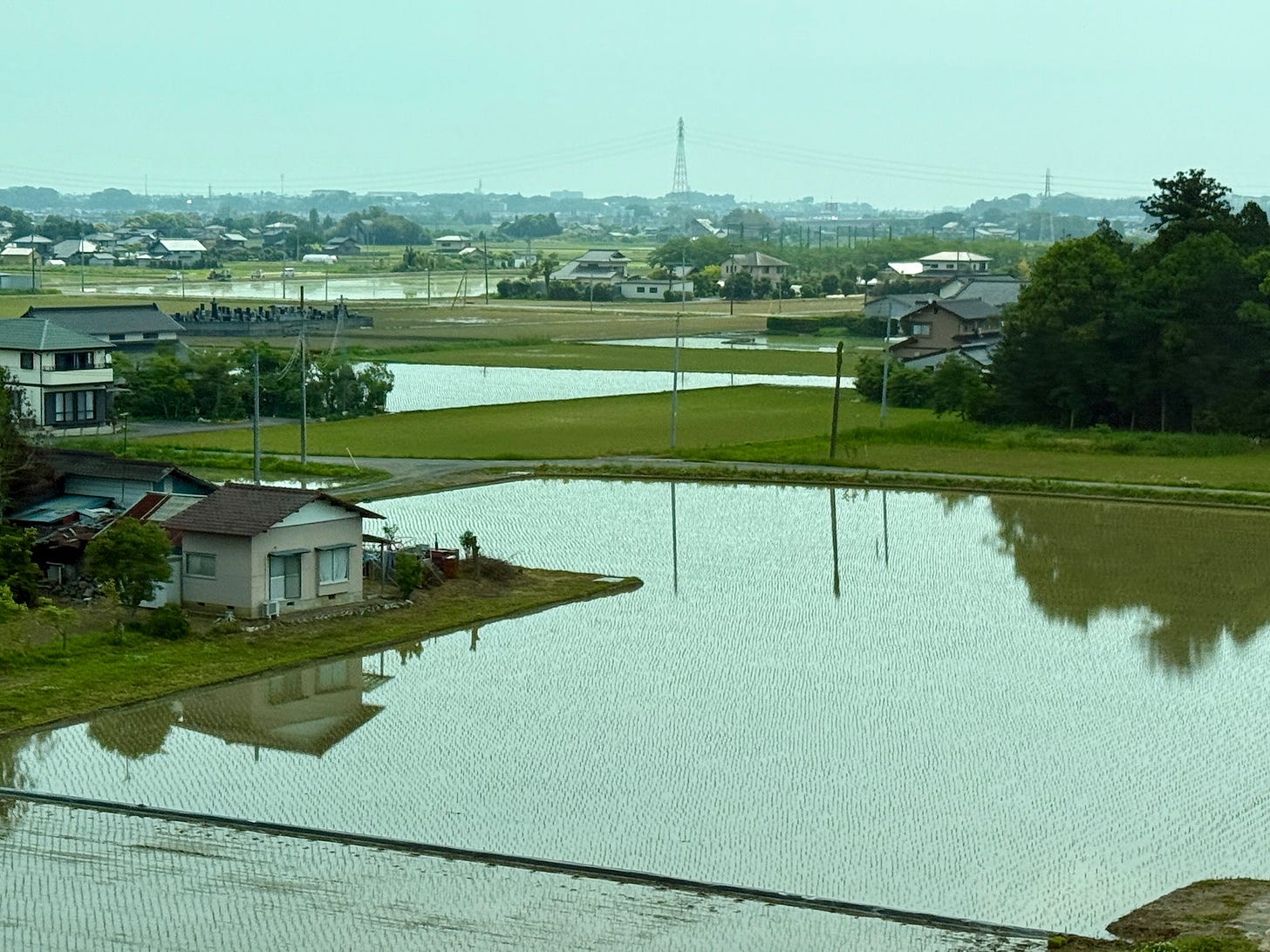
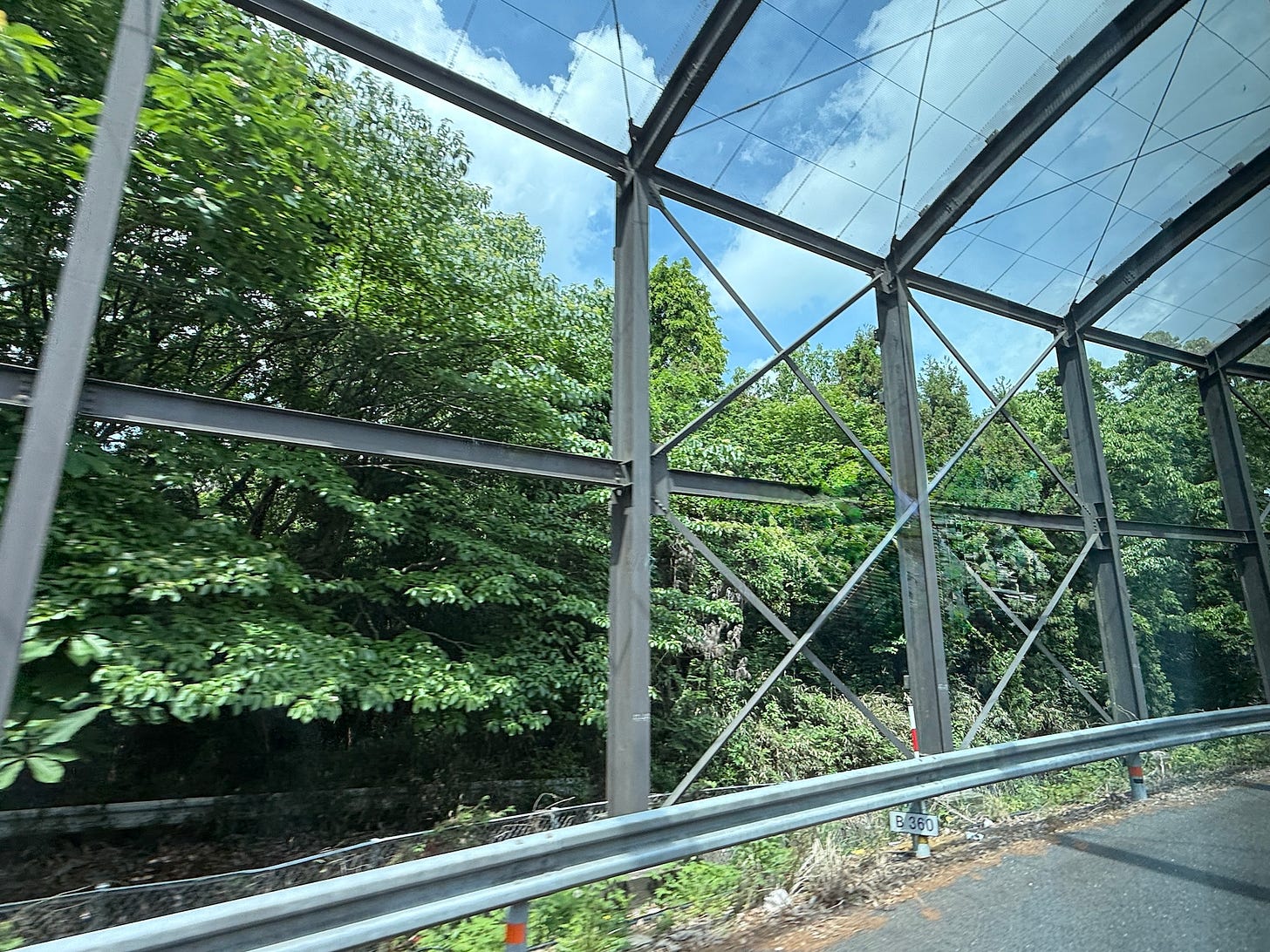

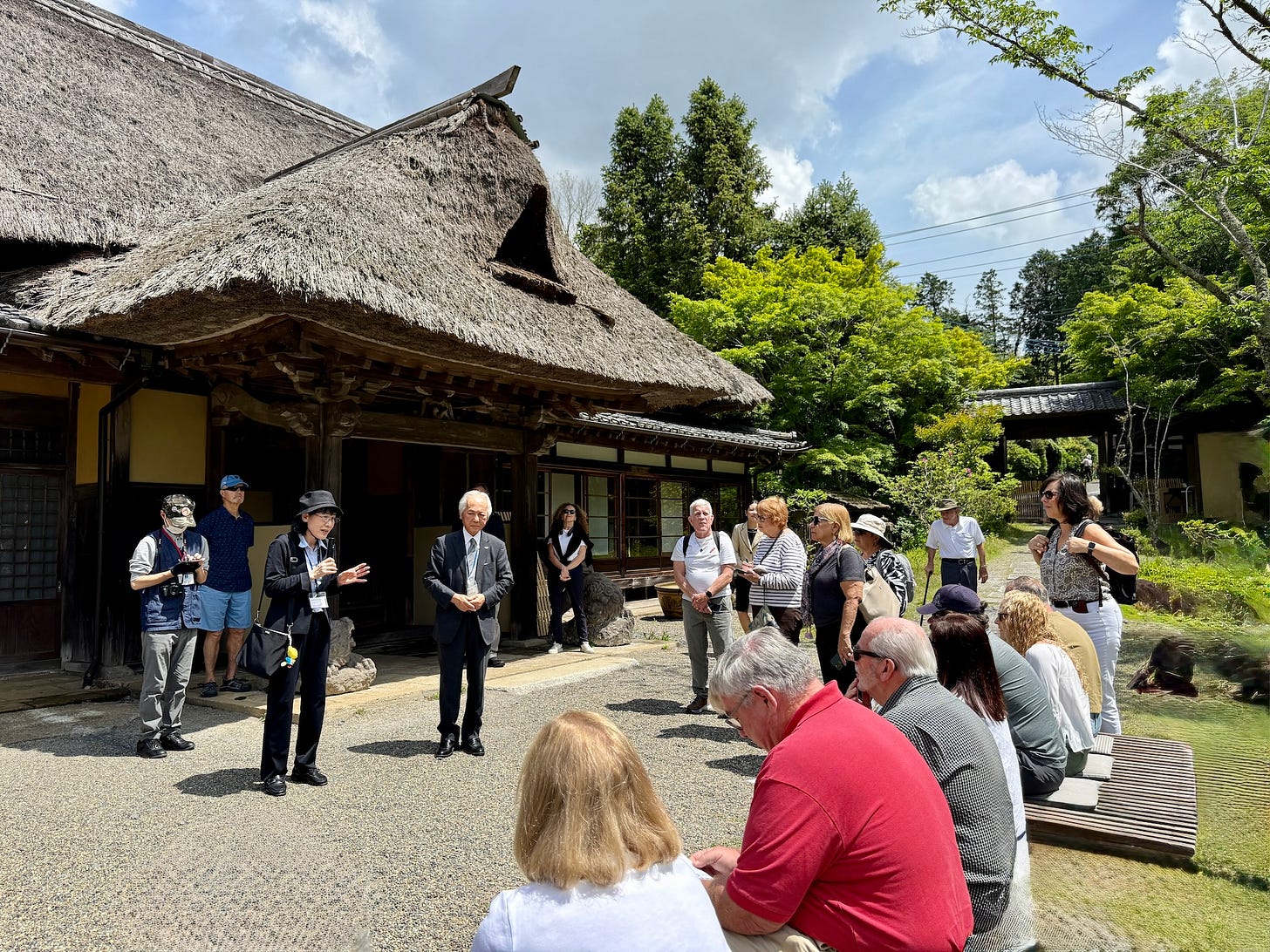
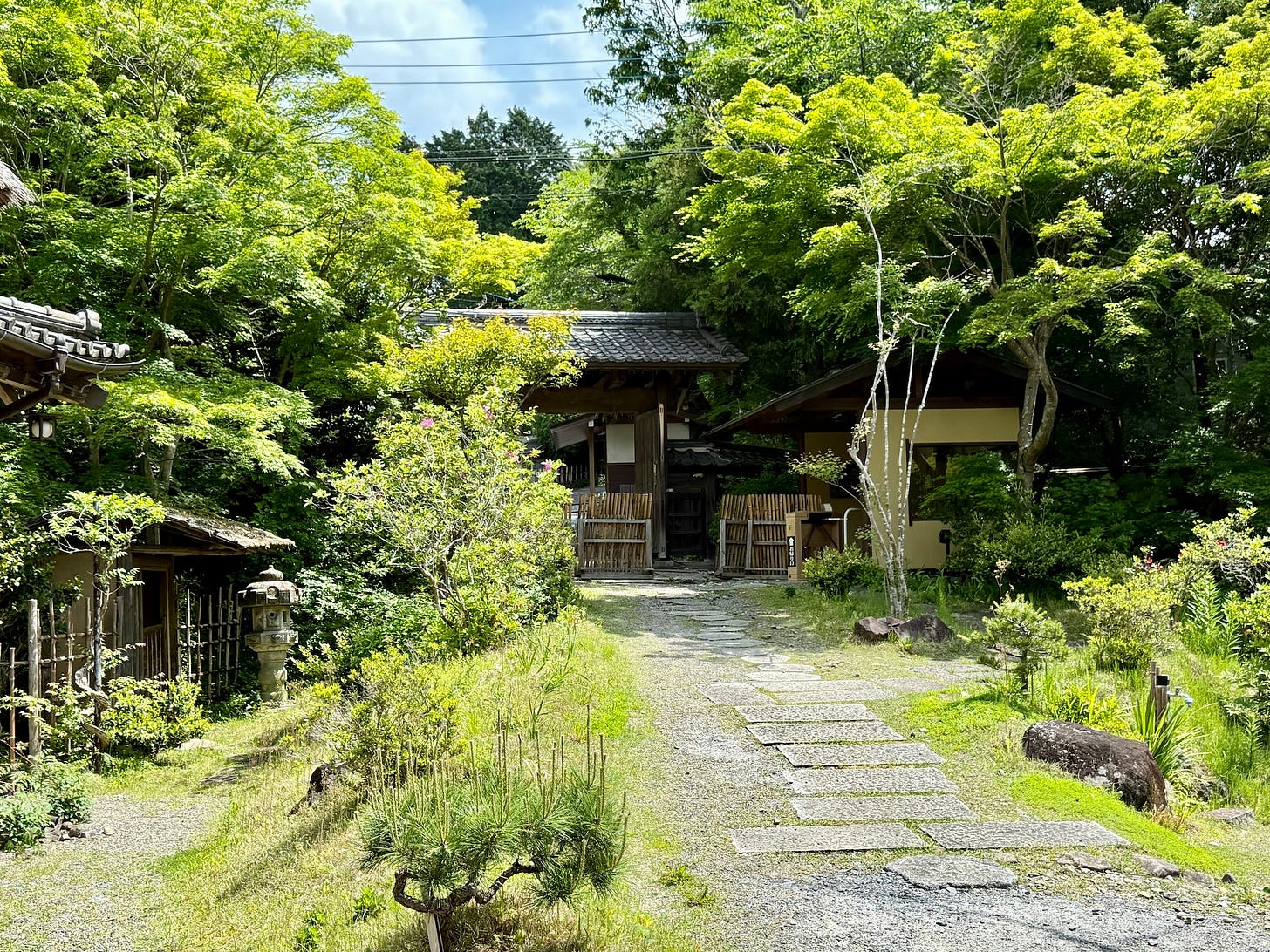


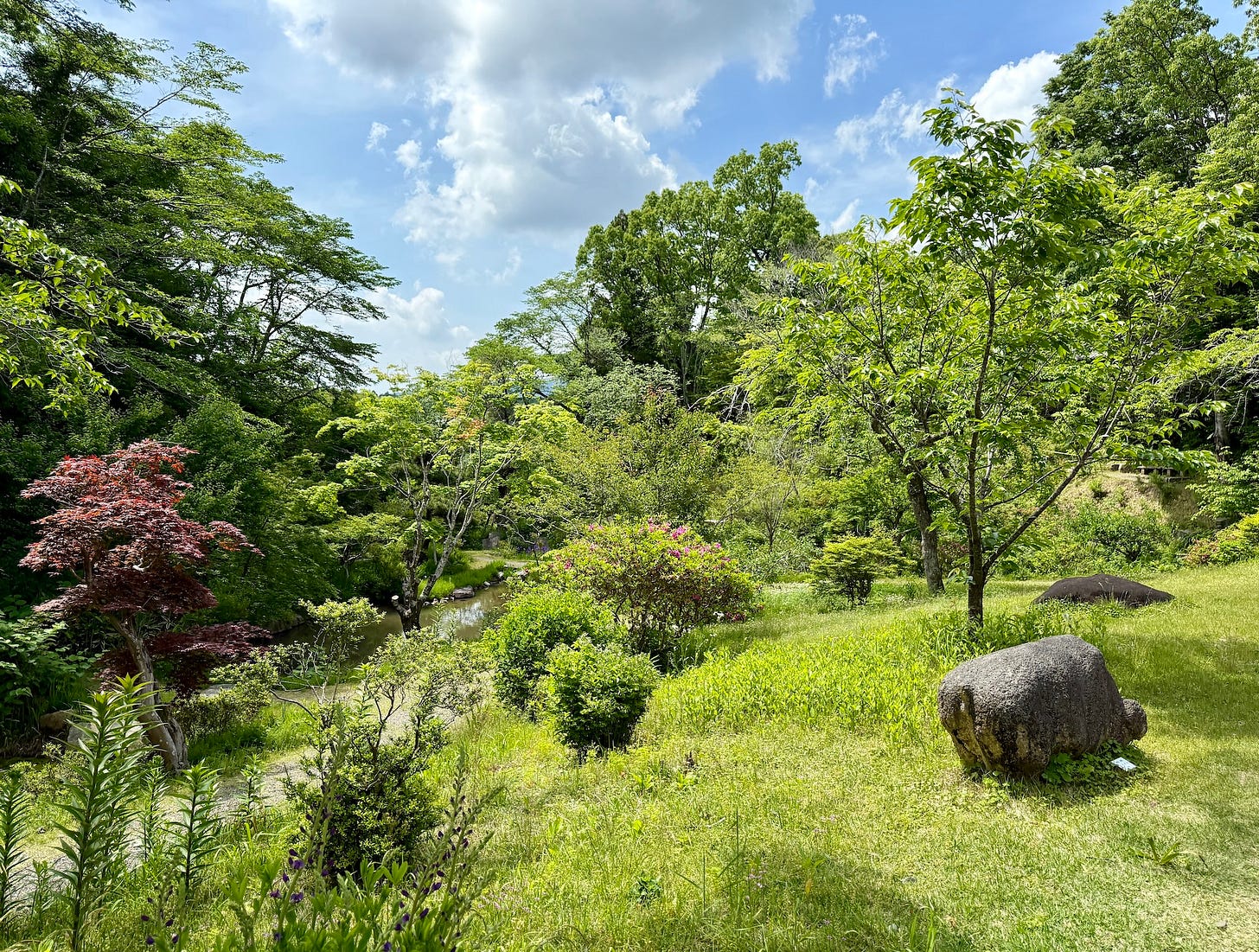

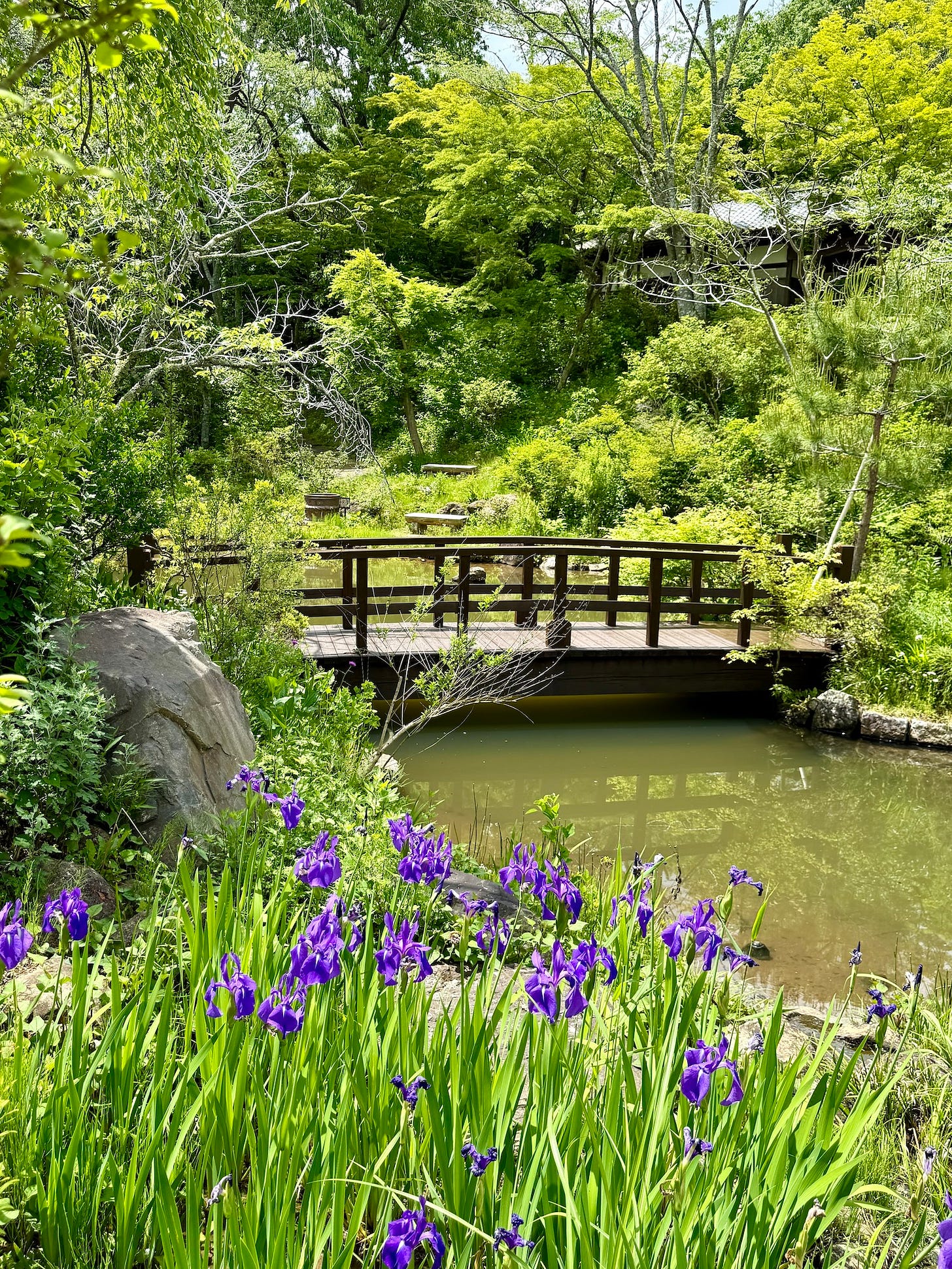
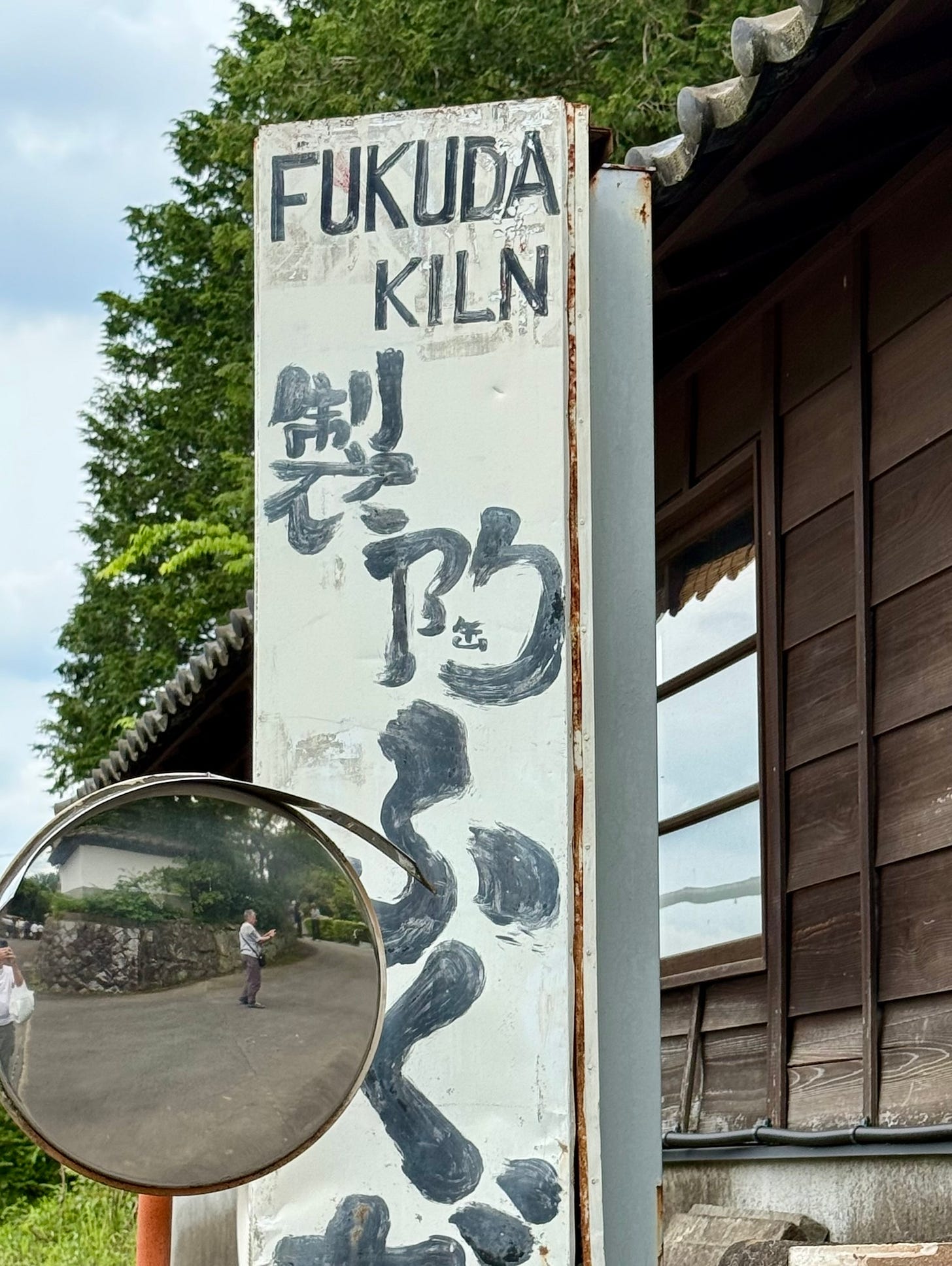
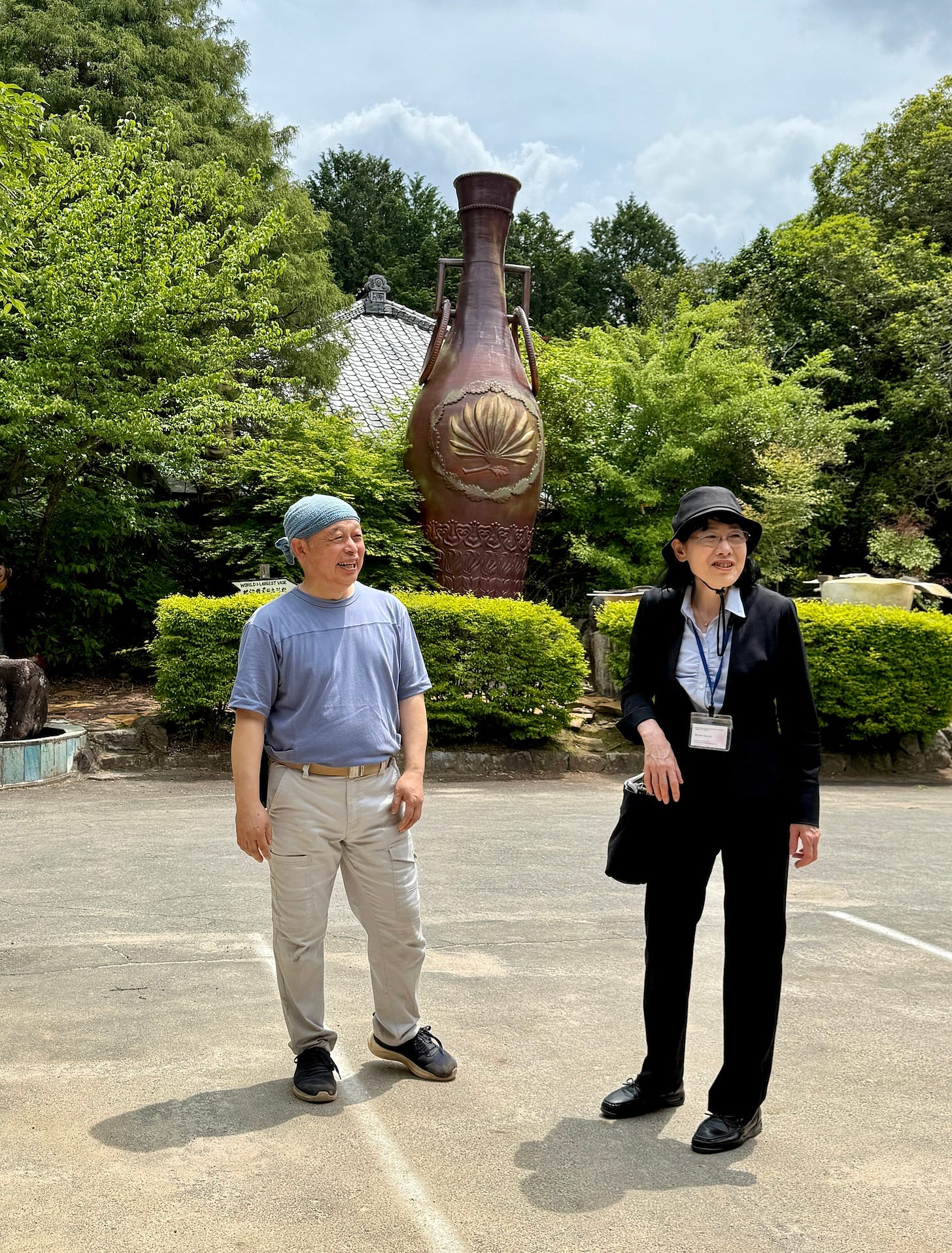
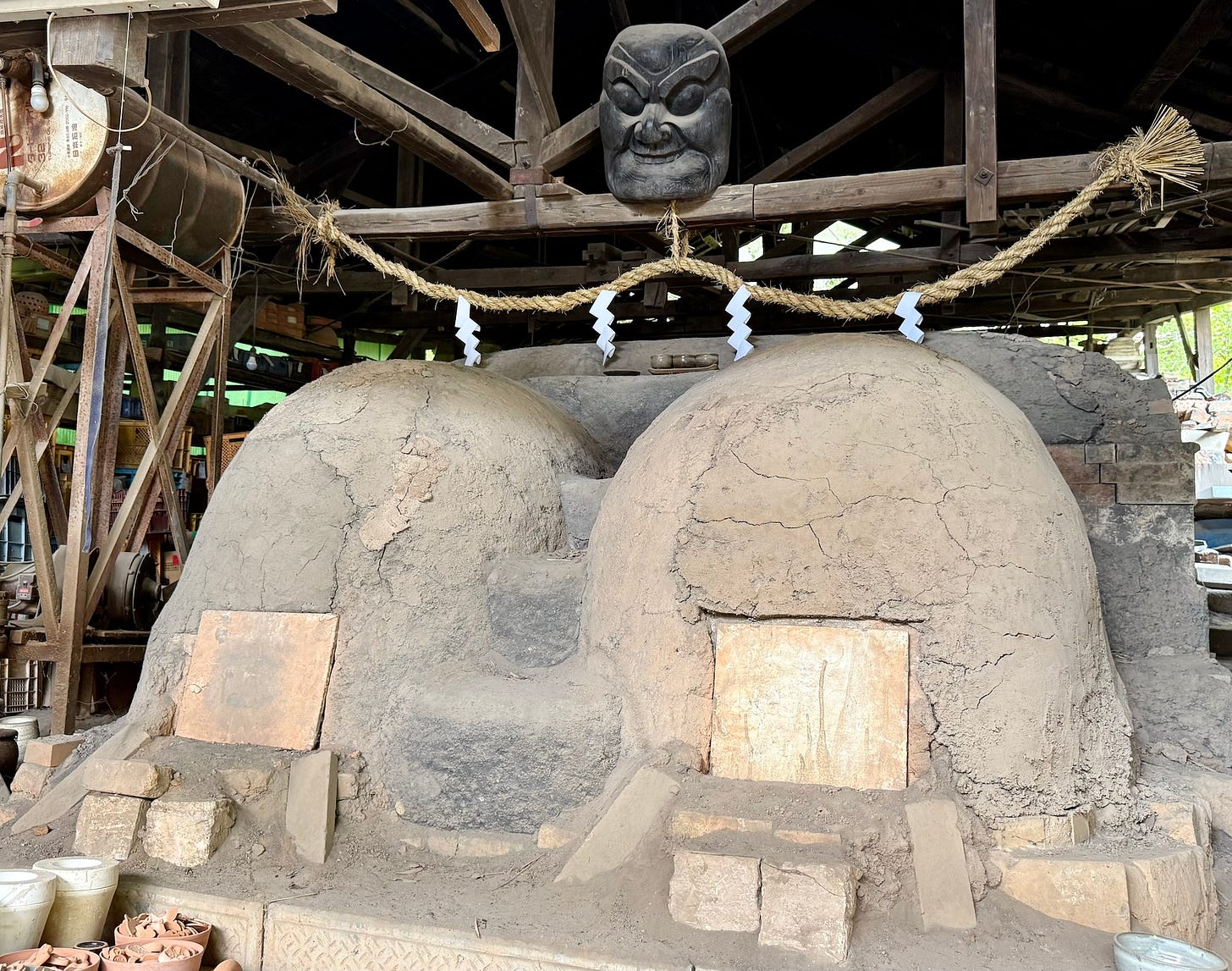
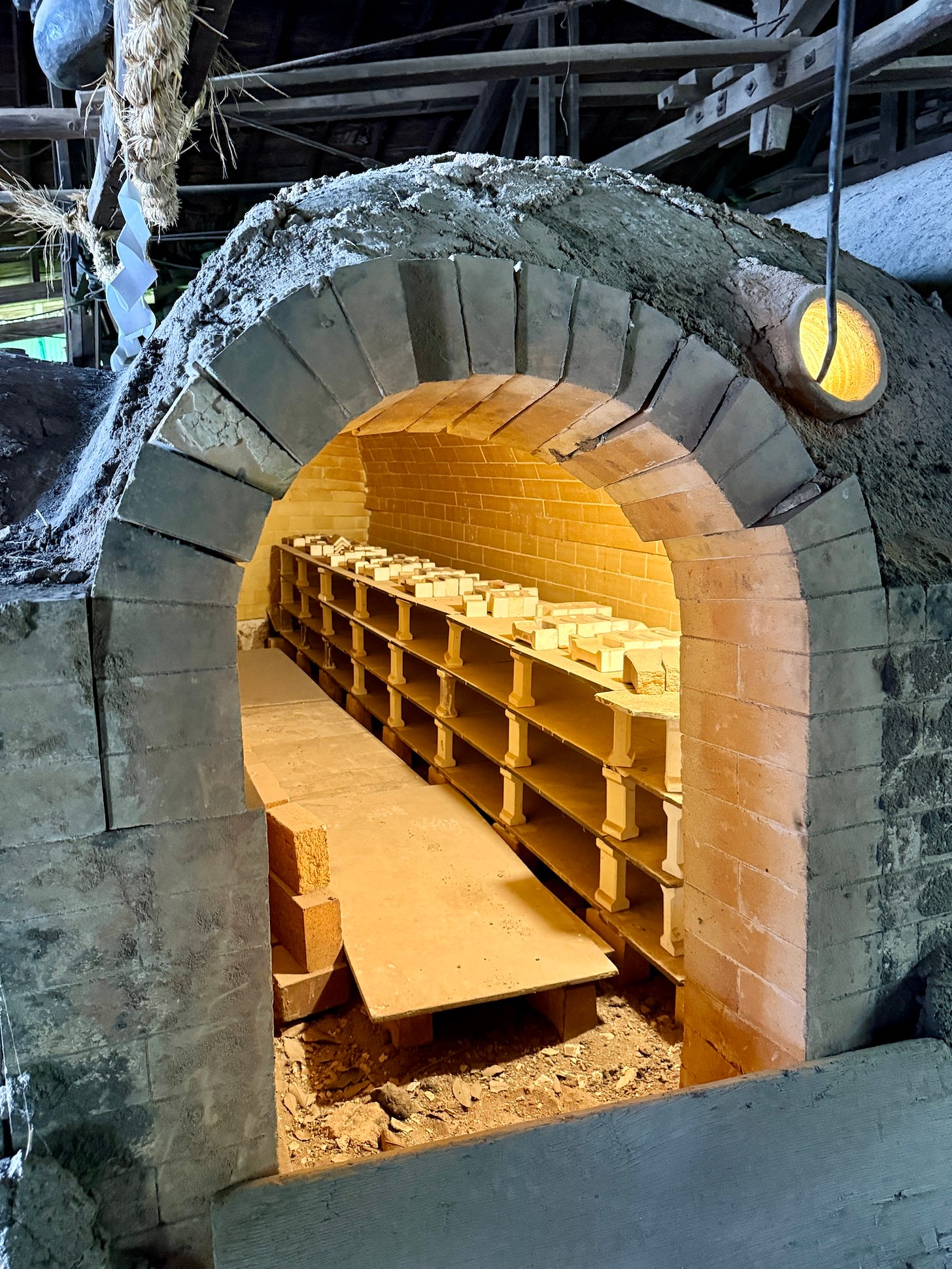
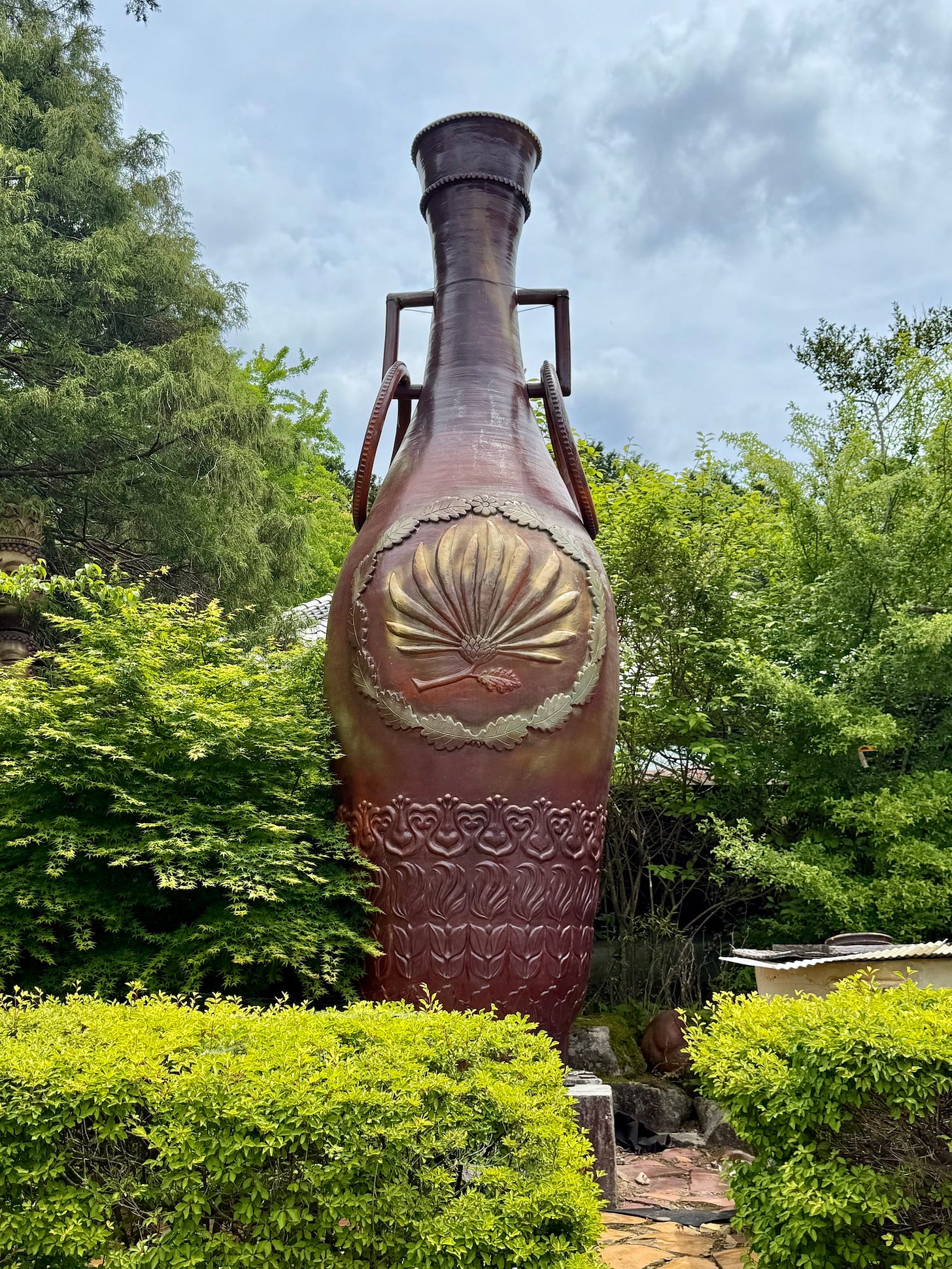
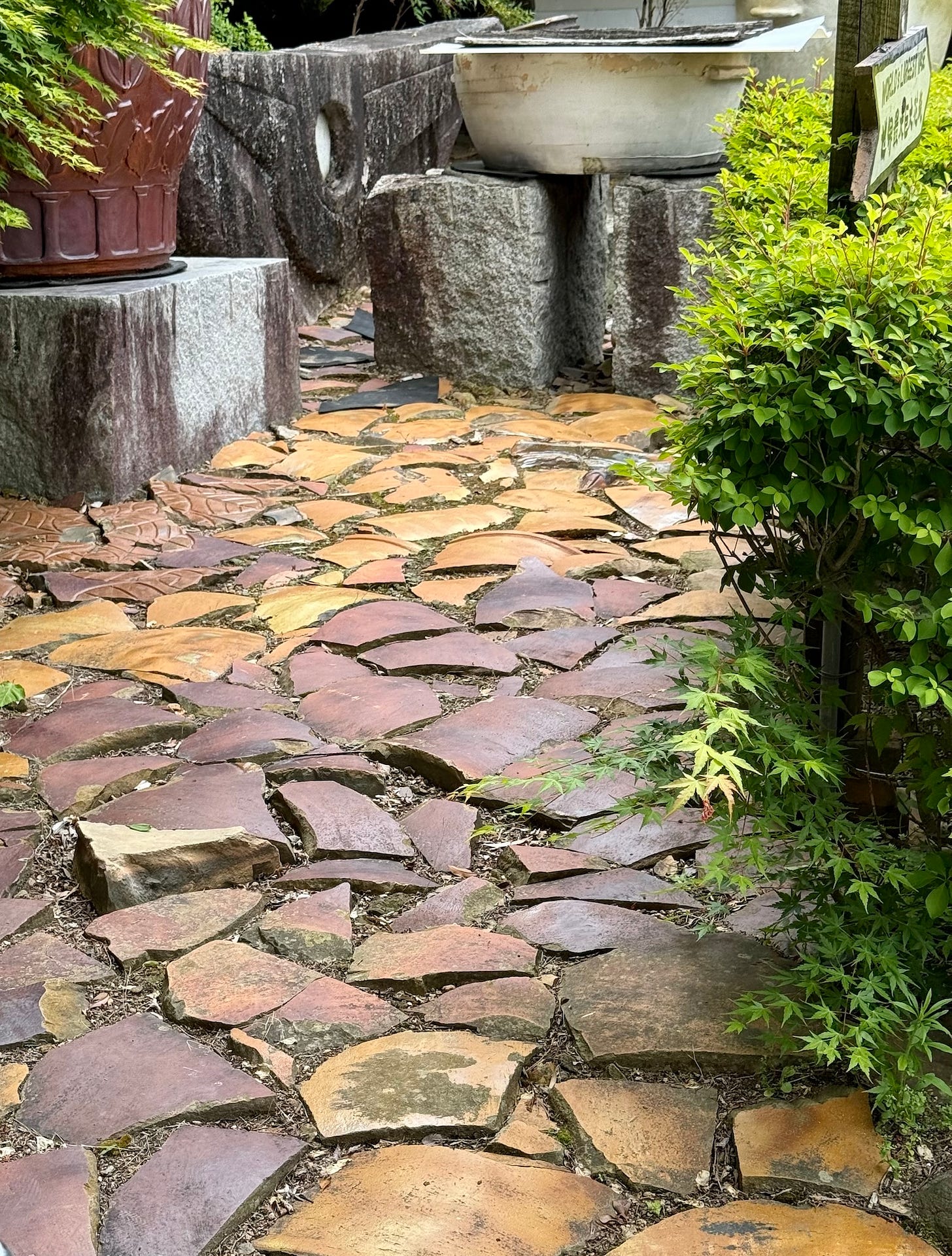
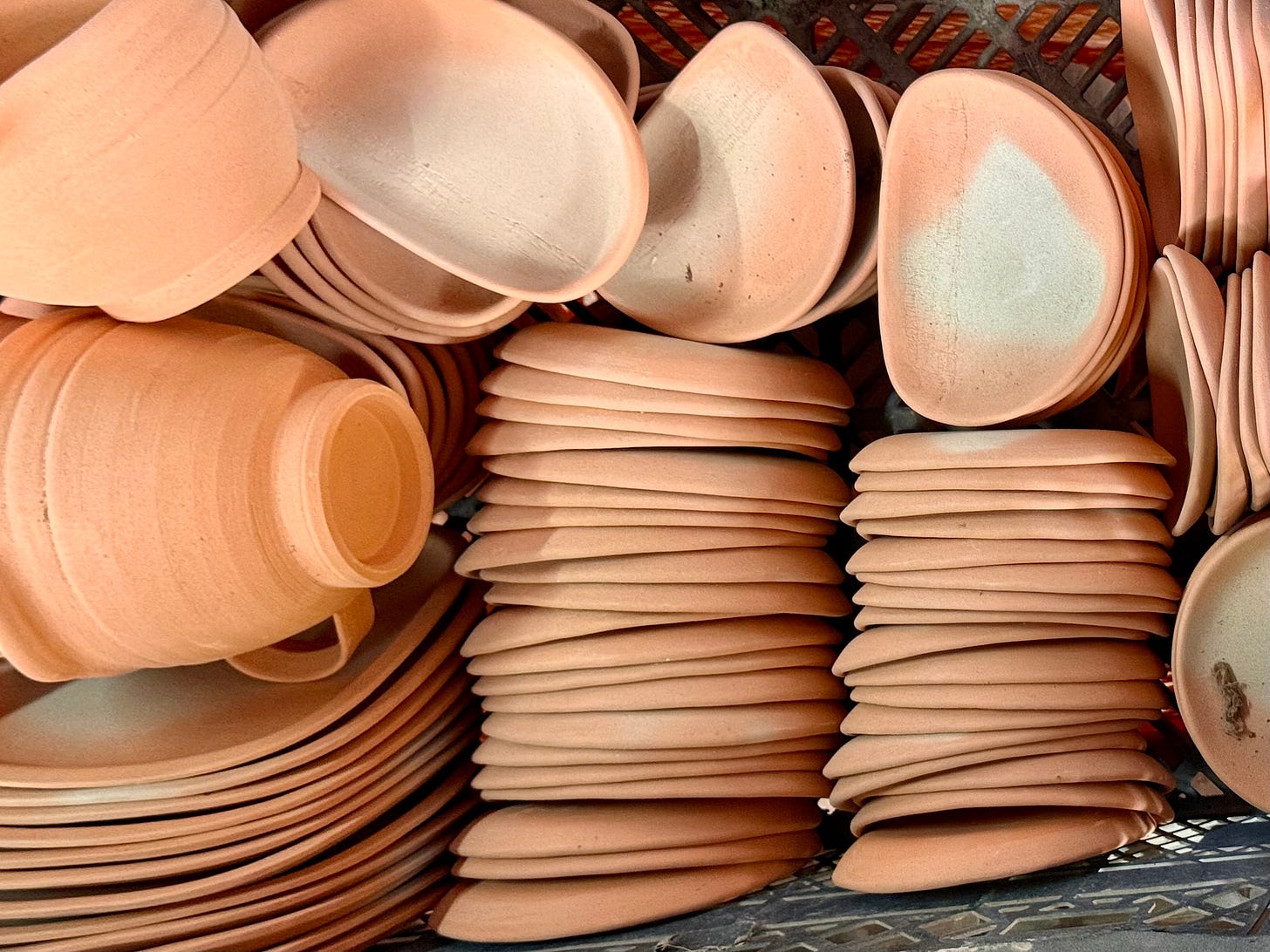
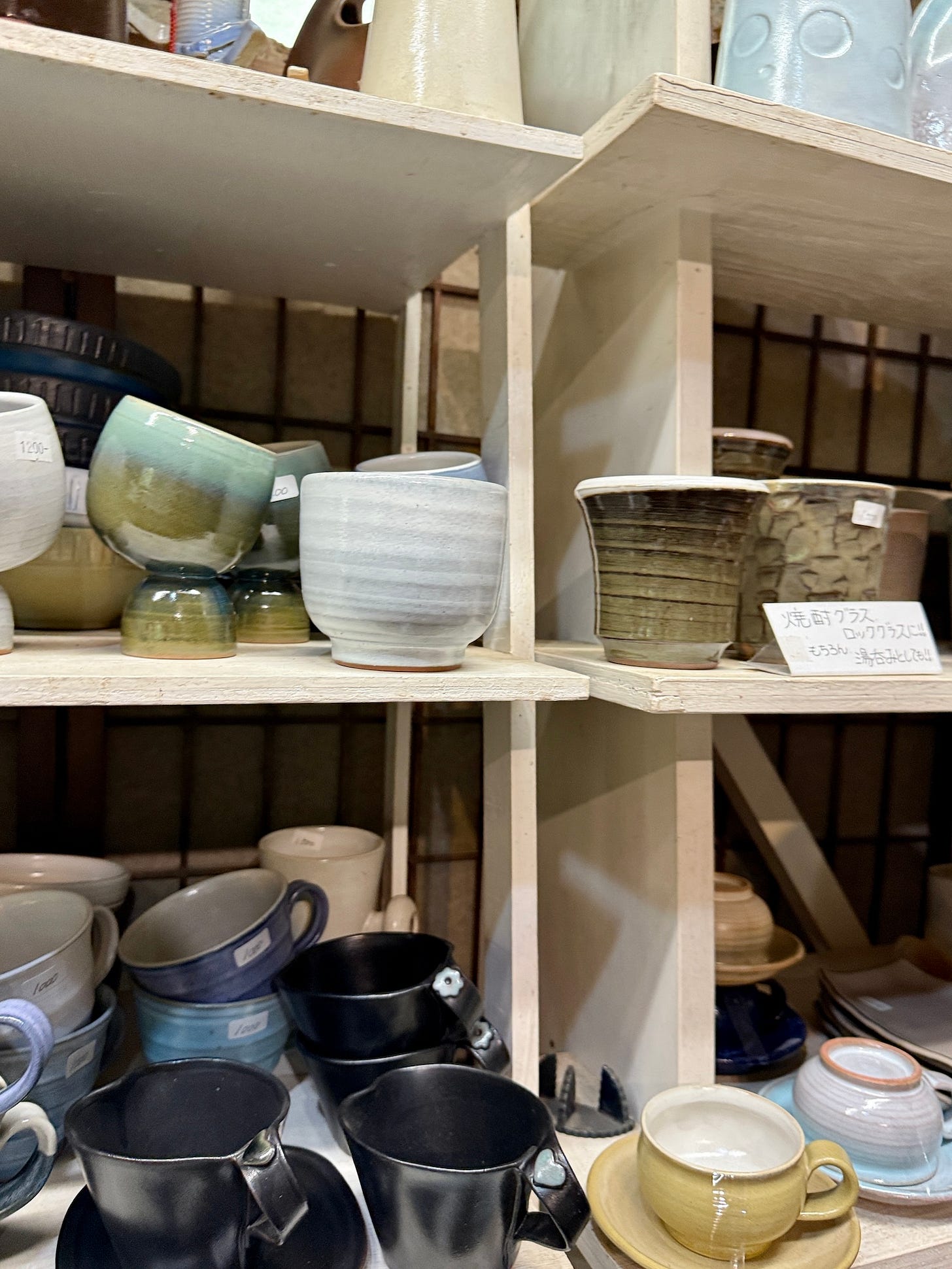
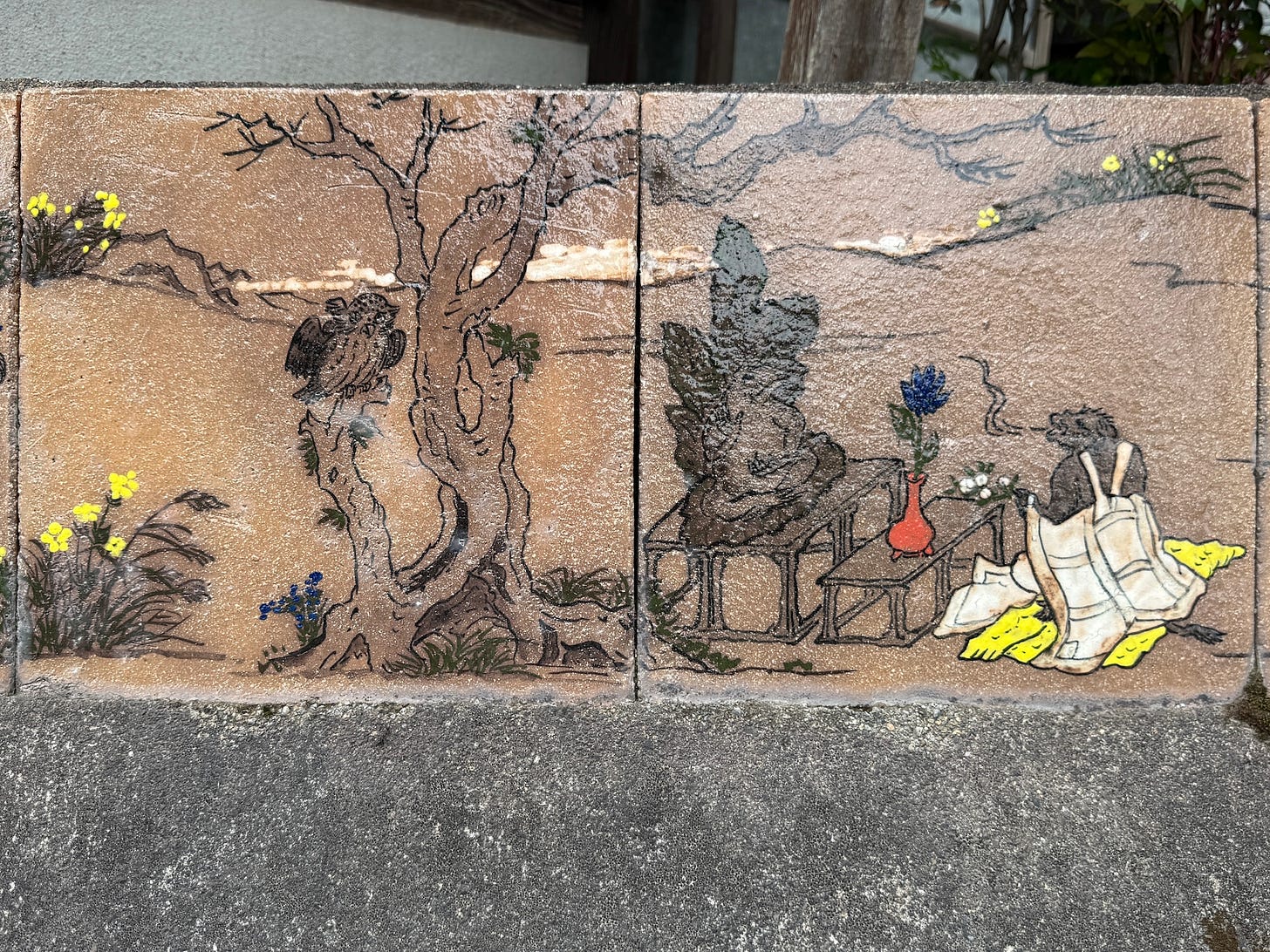

The contraption over the bridge- keep out deer?
Wonderful as always!
Congratulations on your article in Society Pages!